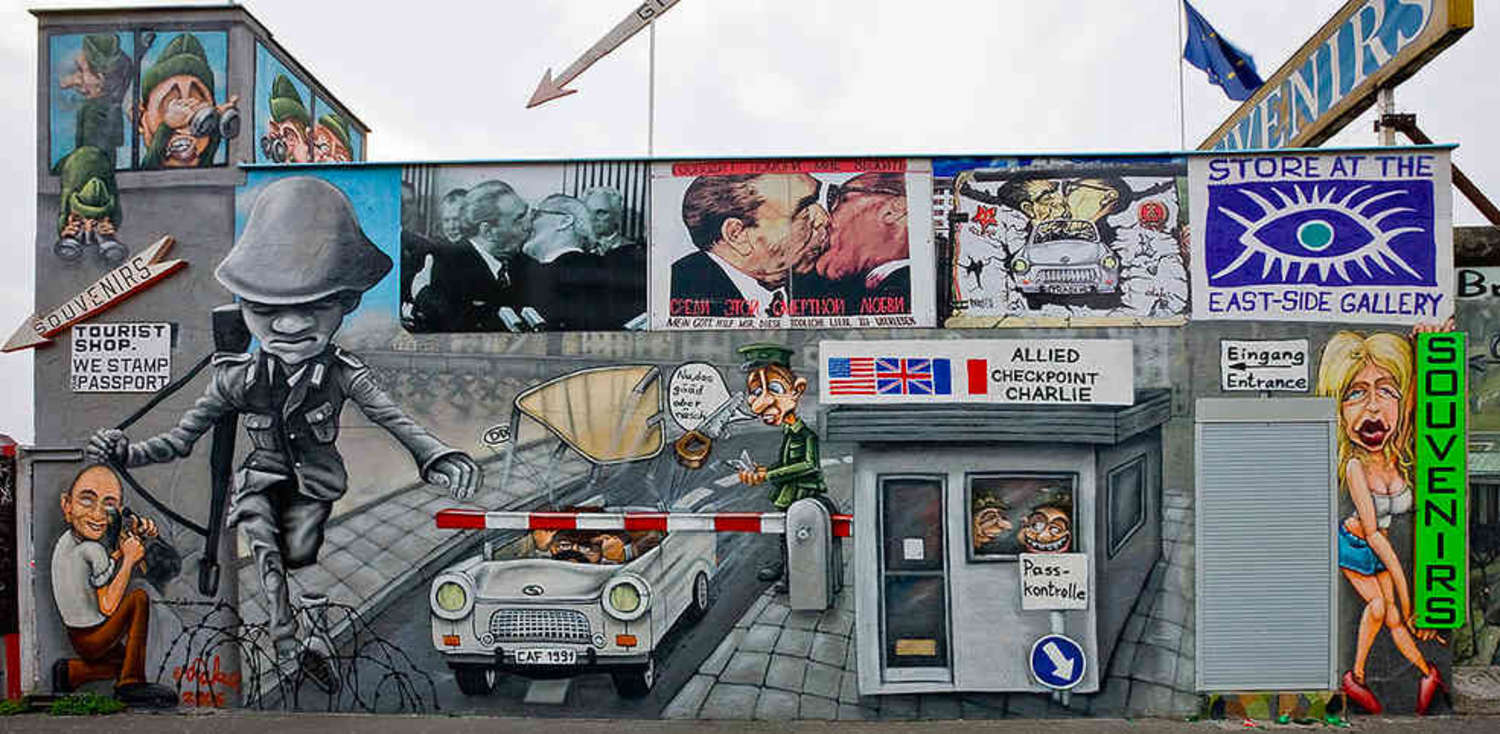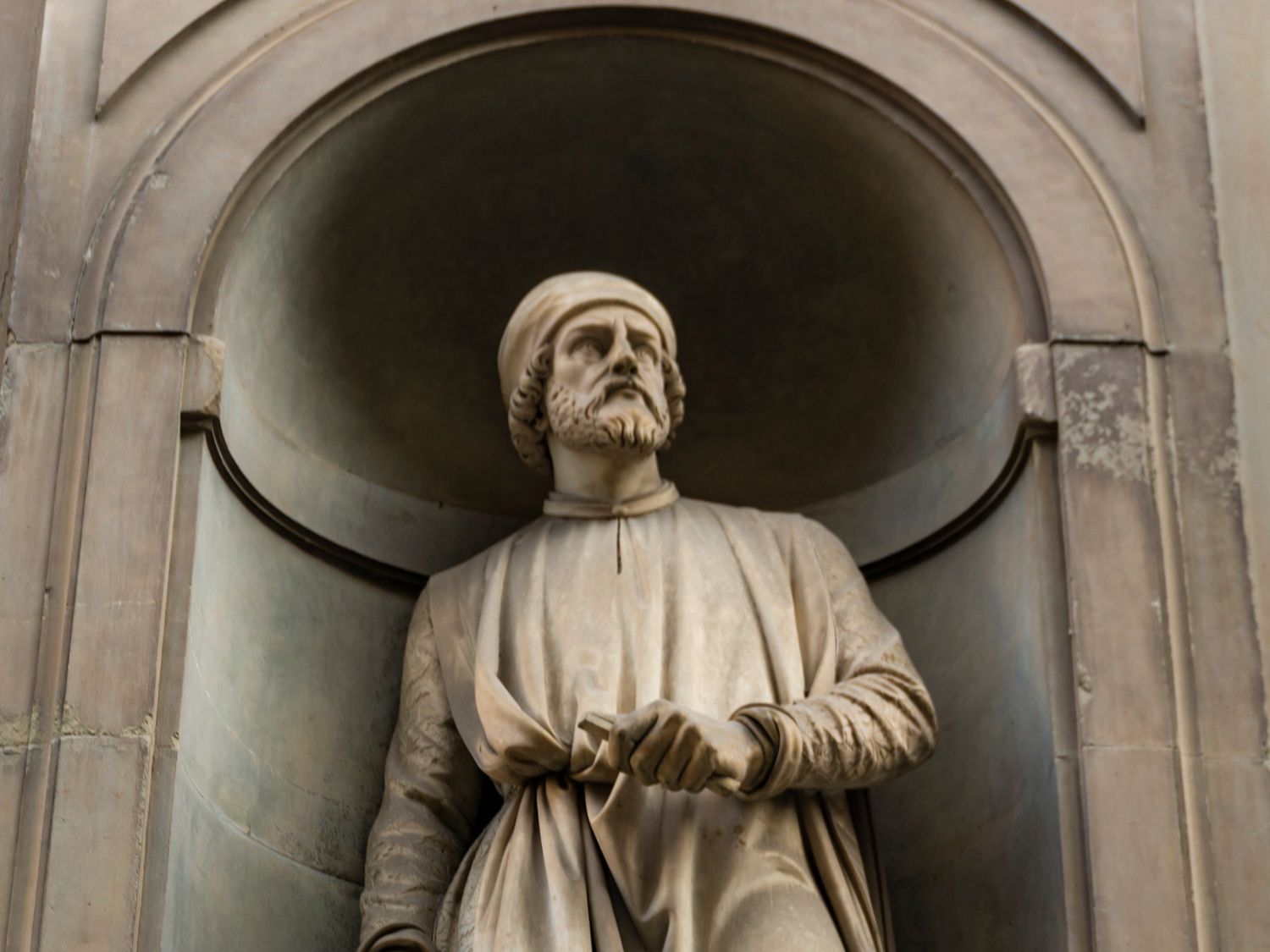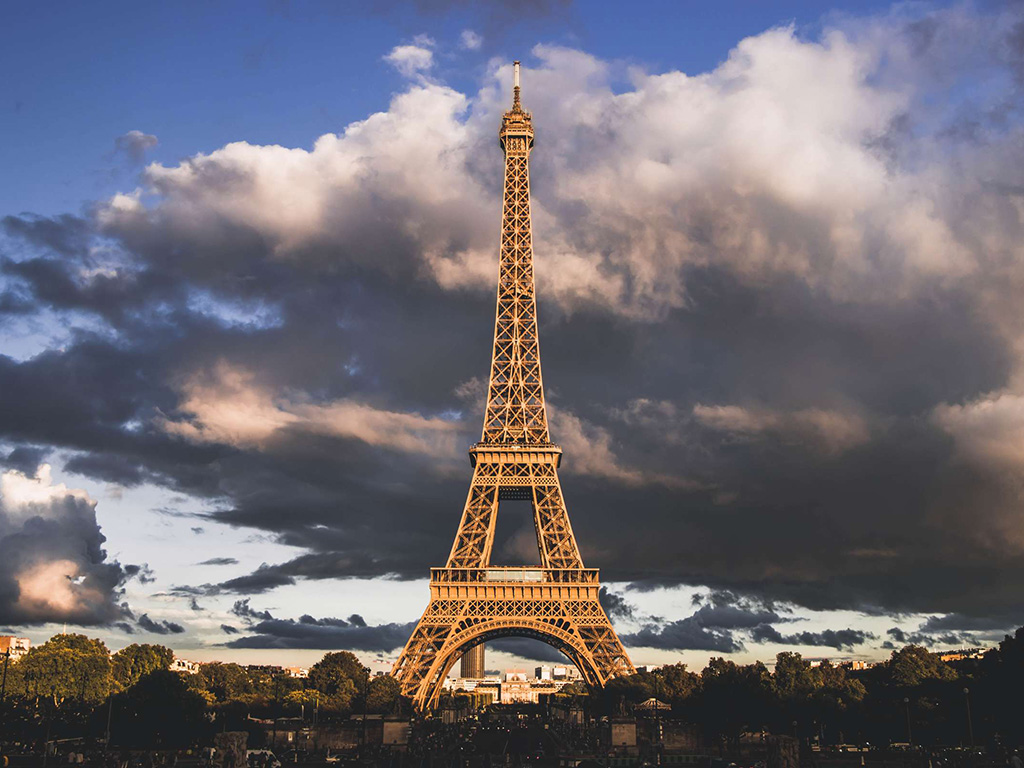Contrary to what you might think, the Berlin Wall did not cut the city in half. Instead, it surrounded the western part of the city, which, at the time, was divided up between the American, British and French, who had helped to liberate Berlin at the end of World War II.
The eastern side was controlled by the USSR, whose forces had been instrumental in defeating the Nazis. In the chaos and aftermath of the war, it was impossible to foresee the problems that would arise with the carving up of the city. West Berlin was a haven of capitalism deep behind the Iron Curtain, and for around 15 years, East and West Berliners were allowed to move freely around their city. But in 1961, with a flailing economy and a population losing faith in the communist system, the Soviets decided to stop their citizens from jumping ship via the ideological island to the west: they built the Berlin Wall.
Planning Your Visit to the Berlin Wall
There are a number of sites across Berlin where remnants of the Wall still stand, most notably the Berlin Wall Memorial at Bernauer Strasse and the East Side Gallery at Mühlenstraße. Stretching for over a kilometer on the northern banks of the River Spree, the East Side Gallery is the longest remaining stretch of the Berlin wall, and thought to be the world’s largest open air gallery.
People started decorating the Wall not long after the first pieces fell in 1989, and today the gallery features over 100 murals from international artists. The colorful artworks are based on themes of freedom, anti-oppression and political satire, bringing recent history to vivid life. Berlin Wall Memorial at Bernauer Strasse is open every day except Mondays 9:30 a.m. – 7:00 p.m. from April to October and 9:30 a.m. – 6:00 p.m. from November to March. The East Side Gallery and is located in an open public space and is accessible at any time.
Berlin Walking Tour Options with Context
- For families, we recommend our Berlin Wall History Tour for Kidstour, which takes in the the East Side Gallery and Memorial, where imagine what it might have been like as a family separated by the Wall. We examine the murals and talk about what they mean, and imagine what we might draw ourselves. Then we jump on the S-Bahn train to Alexanderplatz, where we shoot to the top of the iconic TV Tower to take in panoramic views of the city. From 200 meters up, there are still plenty of visible signs of a city with two very different stories to tell.
- For a more serious, in-depth study of the Wall and its legacy our Berlin Wall Walking Tour tour traces the history and implications of that notorious concrete divider that ran 97 miles around the three western sectors of Berlin and 27 miles directly through its centre. The walk is an insightful experience that continues to resonate with visitors as they spend time in the city, highlighting the legacy of its recent turbulent history.
- For those who’d like to cover more ground and enjoy cycling, there’s also our Biking the Wall experience.
- Interested in Cold War Berlin? Our Cold War History Tour tour examines the deep divisions between East and West Berlin through the lens of architecture.
- For more on Berlin and its history as the capital of Nazi Germany, our Nazi History Tour explores important WWII sites including Hitler's bunker, the Topography of Terror museum, and the Memorial to the Murdered Jews of Europe.
Berlin's Weather & Temperature
Berlin’s weather is surprisingly warm in summer; regularly in the high 20s and sometimes even topping 30°C (86 °F) in June, July and August. September to October is generally mild, and very beautiful, with crisp autumn days and multicolored leaves. As the remains of the Berlin Wall are outside, during this time, pack a jacket, scarf and a hat, but nothing too heavy. November through February is by far the harshest time, weather-wise, with regular snow, ice and temperatures plummeting to -10 C (14 F). A hardy winter jacket, boots, hat, gloves and thick wool scarf are highly recommended.
Navigating Berlin Public Transit
- Berlin Wall Memorial (Bernauer Strasse)-- U-bahn station Bernauer Strasse (U8), S-bahn station Nordbahnhof (S1, S2), Tram M10 Bus 245, 247
- East Side Gallery (Mühlenstrasse--) U-bahn station Warschauer Strasse (U1), S-bahn station Ostkreuz (S41, S42, S5. S7, S75) Tram M10
Glossary
- Berliner Mauer--Berlin Wall, is a barrier constructed by the German Democratic Republic (GDR) that cut off by land West Berlin from surrounding East Germany and East Berlin.
- Berliner Luftbrücke--Berlin Airlift. With Soviet Union blocking the railway, road, and canal access to the western sectors of Berlin (1948-1949), Berlin airlift was used by Western Allies forces to carry supplies to the people in West Berlin.
- Mauerfall – Fall of the Berlin Wall, started with people demolishing the Wall from East Berlin side on 9 November 1989.
- Stasi– Ministry for State Security in GDR. Carrying the motto of “Shield and Sword of the Party” it was one of the most secretive and efficient intelligence agencies at the time, using its vast network of citizens turned informants, and fighting any opposition by often dubious measures.
Additional Reading
- Die Berliner Mauer Heute. The Berlin Wall Today. Polly Feversham and Leo Schmidt. HUSS-Medien, Berlin, 1999.
- Stasiland: Stories from Behind the Berlin Wall. Anna Funder. Granta Publications, 2003.
- Death at the Berlin Wall. Pertti Ahonen. Oxford University Press, 2011.
- The Fall of the Berlin Wall. William F. Buckley Jr. John Wiley & Sons Inc., 2004.
- Constructing East Germany: Interpretations of GDR History since Unification. Mike Dennis. United and Divided: Germany since 1990.
- Mike Dennis/ Eva Kolinsky (eds.), New York: Berghahn Books, 2004, pp. 17-32.
- Want to learn with a true expert? Get a comprehensive view with one of Context's private or small group tours in Berlin!
You Might Also Like:
The Berlin Wall Memorial: A Powerful Reminder of History
15 Fantastic Things to do With Kids in Berlin
Exploring Berlin’s Rich Heritage: A 5-Day Itinerary for Unforgettable Tours













